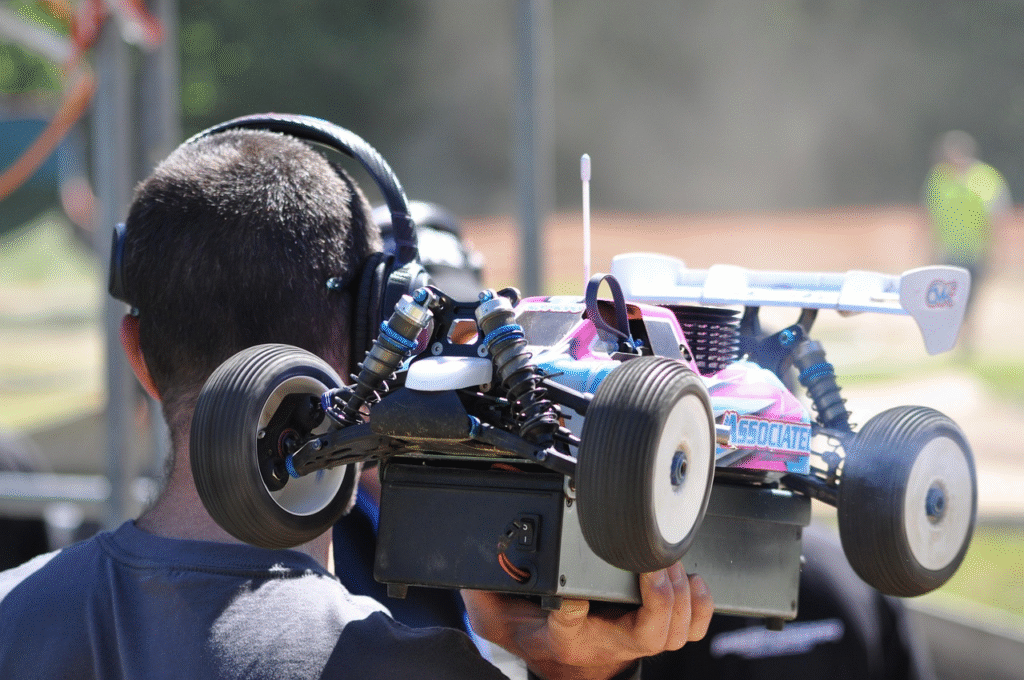
Everything You Need to Know Before Jumping Into the World of Remote Control Cars
Remote control (RC) cars are more than just toys—they’re a gateway into an exciting hobby that blends engineering, racing, creativity, and outdoor fun. Whether you’re buying your first RC car, thinking of picking it up as a hobby, or shopping for your child, this beginner-friendly guide will cover all the essentials to help you get started confidently.
What Is an RC Car?
An RC car is a miniature vehicle operated remotely using a handheld transmitter. It can range from a simple toy that zips around indoors to a sophisticated, high-speed machine capable of racing across dirt tracks or climbing over rocky terrain.
There are two main categories:
- Toy-Grade: Affordable, easy to use, great for kids.
- Hobby-Grade: More powerful, customizable, and durable—ideal for enthusiasts.
Power Types: Electric vs Nitro vs Gas
🔋 Electric RC Cars
- Powered by rechargeable batteries (NiMH or LiPo)
- Quiet, clean, and low-maintenance
- Best for beginners and indoor/outdoor casual play
🔥 Nitro RC Cars
- Uses nitro fuel and small combustion engines
- Loud, fast, and more realistic
- Requires engine tuning and fuel management
⛽ Gas-Powered RC Cars
- Larger scale cars using gasoline/oil mix
- Mostly for serious hobbyists due to size and cost
For most beginners, electric RC cars are the way to go.
RC Car Types by Terrain
🛣️ On-Road Cars
- Made for smooth surfaces like pavement and tracks
- Fast with sharp handling
- Not ideal for rough terrain
🌄 Off-Road Cars
- Includes buggies, monster trucks, and rock crawlers
- Designed for gravel, grass, sand, and mud
- Great for backyard fun and beginners
Size Guide: Understanding Scale
RC cars come in various scales, which indicate their size relative to a real car:
| Scale | Approx. Length | Ideal For |
|---|---|---|
| 1:10 | 17 inches | Most common and versatile |
| 1:12 | 13 inches | Good size for beginners |
| 1:18 | 10 inches | Portable, indoor-friendly |
| 1:24+ | 8 inches or less | Compact, basic play |
Larger cars often come with more power but are also more expensive.
2WD vs 4WD: What’s the Difference?
- 2WD (Two-Wheel Drive): Simpler, more affordable, but less grip on rough terrain.
- 4WD (Four-Wheel Drive): Better traction and control, especially off-road—ideal for beginners.
Ready-to-Run (RTR) vs Kit Builds
- RTR (Ready-to-Run): Fully assembled, just charge and go—perfect for beginners.
- Kits: Build-it-yourself models with customizable parts—best for experienced users who enjoy tinkering.
Battery Basics
Most electric RC cars use:
- NiMH Batteries: Durable and affordable but heavier.
- LiPo Batteries: Lightweight, longer run times, and more power, but require careful handling.
Always buy a good charger and consider extra batteries for extended play.
RC Cars by Age Group
| Age Group | Recommended Features |
|---|---|
| 3–6 yrs | Simple controls, slow speed, crash-resistant build |
| 7–12 yrs | Moderate speed, basic off-road capability |
| 13+ yrs | Hobby-grade features, customizable parts |
| Adults | High-speed models, kits, performance tuning |
Top Features to Consider Before Buying
- Speed: Measured in mph or km/h—beginners may want slower cars to start.
- Control Range: Most toy cars range 30–100 ft; hobby-grade goes beyond.
- Durability: Look for reinforced bumpers and water-resistant parts.
- Replacement Parts: Check if you can buy spares or upgrade components.
Maintenance Tips for Beginners
- Clean the car after every run—especially off-road.
- Avoid overcharging batteries.
- Store in a cool, dry place.
- Tighten screws and check moving parts often.
💸 How Much Should You Spend?
| Price Range | What You Get |
|---|---|
| Under \$50 | Toy-grade, basic models for kids |
| \$50–\$150 | Entry-level hobby-grade RCs |
| \$150–\$400 | Mid-range cars with good performance |
| \$400+ | Pro-level speed, build, and tuning |
Learning by Playing
RC cars are a fantastic introduction to mechanical thinking, physics, and hands-on problem solving. As you grow in the hobby, you’ll learn:
- How to swap tires or motors
- How battery types affect performance
- How to tune your RC car for racing or off-roading
Final Tips for Getting Started
- Start with a Ready-to-Run electric model.
- Choose off-road 4WD for versatility and better control.
- Stick with known brands like Traxxas, Arrma, Redcat, or WLtoys.
- Watch unboxing and review videos before buying.
- Read the manual and understand your car’s limits.
Conclusion: Your RC Adventure Begins Now
Whether you’re a curious beginner or helping your child enter the world of remote control cars, the key is to start simple and build experience gradually. RC cars offer more than just fast fun—they teach patience, mechanics, and a sense of achievement.
Ready to hit the throttle? Your first RC car journey awaits!



